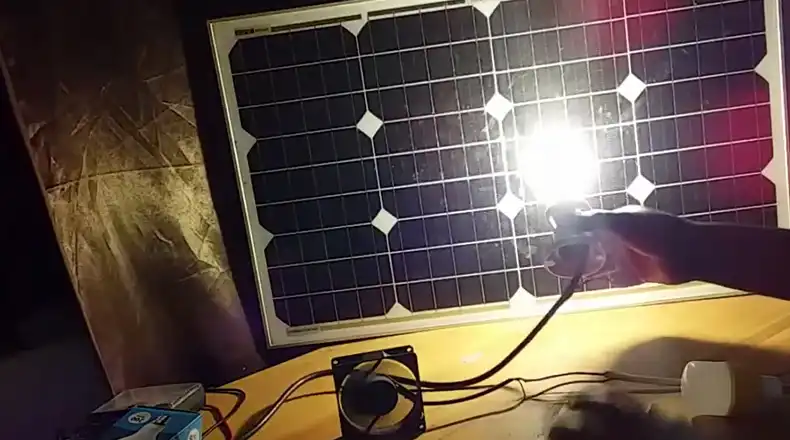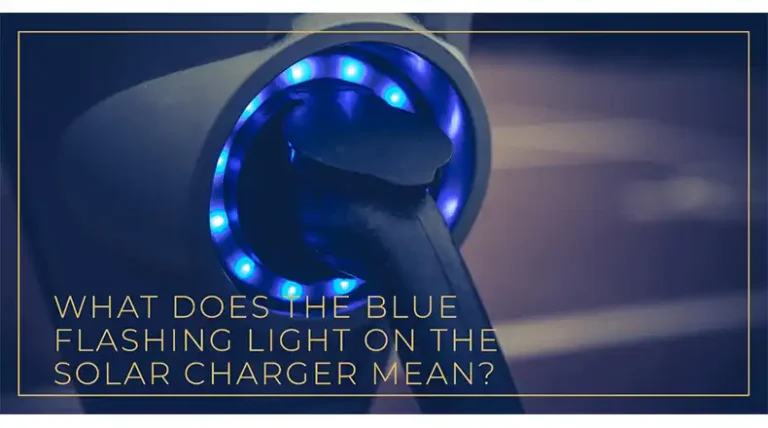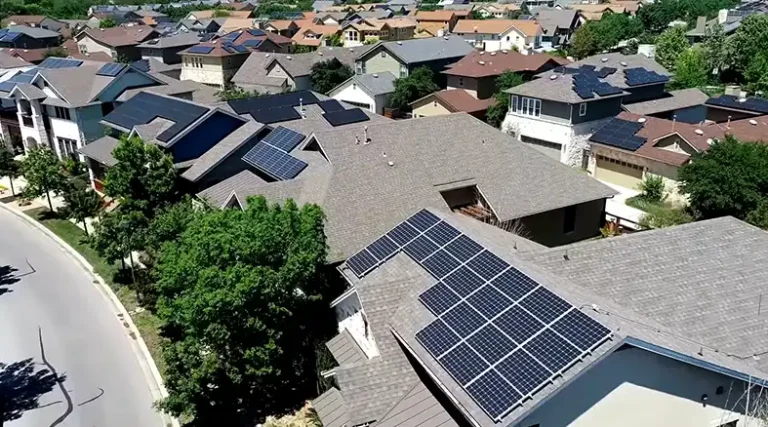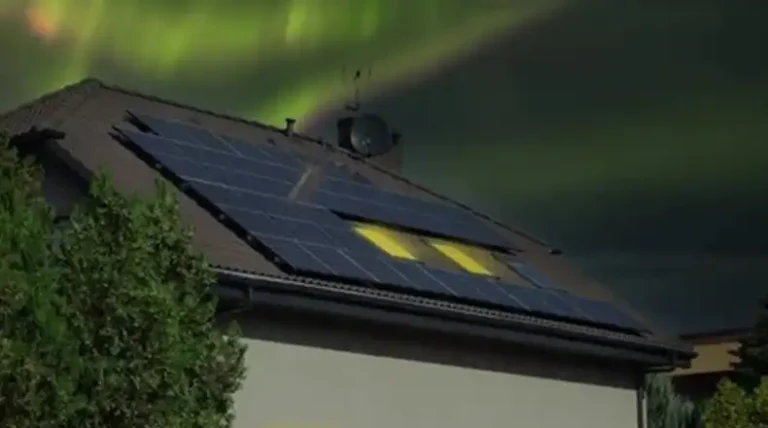Can Solar Panels Work with Artificial Light?
Have you ever wondered if solar panels can generate electricity from artificial light rather than just sunlight? The short answer is yes, however, artificial light cannot serve as a viable alternative. While some indoor lights like LEDs and fluorescents can activate solar cells, the minuscule electricity produced is not practical for powering systems designed for sunlight.
This is because artificial light lacks the irradiance intensity and full light spectrum that solar panels require. Mimicking the sun’s concentrated ultraviolet, visible, and infrared rays with man-made lighting is currently impossible. So sunlight remains the only sufficient energy source for photovoltaics.
In this article, you will get to know the nuances of solar cell design and the limitations of artificial lights that prevent them from powering solar panel systems.

Is It Possible for Solar Panels to Work with Artificial Light or Without Sunlight?
The short answer is yes, it is technically possible for solar panels to generate a small amount of electricity from artificial light. But that electricity is negligible in amount – nowhere near what sunlight can produce.
Solar photovoltaic panels are designed specifically to convert the unique light wavelengths and intensity of sunlight into electrical current. The sun emits the full spectrum of light radiation – ultraviolet, visible, and infrared light. This broad range of solar energy is key to solar cells’ generating capacity.
Artificial light sources simply don’t emit the same quality of illumination. Standard light bulbs like incandescent, LED, halogen, and CFL lights concentrate their light output primarily in the visible spectrum. They lack the ultraviolet wavelengths that solar panels utilize. These artificial lights also radiate illumination in all directions, rather than a focused beam like sunlight. Their intensity is lower than sunlight at ~100 watts/square meter for incandescent bulbs versus ~1000 watts/square meter for the full midday sun.
While some limited solar response is possible from certain types of artificial lighting under ideal conditions, it is nowhere near enough to power solar panels without sunlight viably.
Will Artificial Light be Efficient as Sunlight for Solar Panels?
In short, no – artificial light is dramatically less efficient than natural sunlight when it comes to generating solar electricity. There are a few reasons for these inefficiencies:
- Extremely Low Efficiency – Artificial lights like LEDs or fluorescents have very low efficiency in converting electricity into light, and solar panels in turn have low efficiency in converting this artificial light back into electricity. Total efficiency can be less than 10%.
- Low Power Density – The power density (watts per square meter) of artificial light is quite low compared to natural sunlight. More intense lighting over larger areas is needed to get usable outputs.
- Excess Heat Production – The huge amounts of artificial lighting required generate a lot of excess heat which can damage solar panels and waste further electricity on cooling.
- High Equipment Costs – Specialized UV and IR emitting lights or light concentrators and trackers are expensive to buy and install just to get marginally better artificial light conversion.
- Complex Setups – Getting maximum output from artificial lighting requires careful tuning and orientation of lights, cooling, and positioning systems – much more complex than solar panels naturally getting sun exposure.
- Minimal Energy Return – Even with optimal artificial lighting setups, the energy and costs invested exceed the tiny amount of electricity generated by solar panels. No net energy or financial gains.
- Does Not Work for Large Systems – Residential or commercial solar arrays designed for outdoor sunlight simply cannot be powered meaningfully by artificial lights given their scale.
- Not a Complete Sun Substitute – No artificial light can yet replicate the full spectrum, intensity, and heat of natural sunlight that solar PV systems are designed for.
So in summary, low efficiency, high costs, complexity, and minimal returns limit the viability of artificial lights for solar panel systems. Sunlight remains the only practical renewable energy source.
Lights You Can Use for Solar Panels
While most artificial lights are ill-suited for solar electricity generation, some specific types can produce a tiny amount of current under optimal conditions:
Incandescent Bulbs – Using higher-wattage incandescent bulbs can slightly improve solar power output. However, even very hot, high-wattage bulbs do not emit enough intense, full-spectrum light to viably power solar panels. The limitations of artificial lighting remain an obstacle regardless of wattage.
Monochromatic LEDs – LEDs tuned to specific visible wavelengths like blue or violet light can generate a weak photovoltaic response from solar cells. But the amount of electricity produced is minuscule.
Fluorescent Tubes – Fluorescent lighting produces some light in the valuable ultraviolet and near-infrared spectrum that solar panels can utilize. But the energy output is still far below sunlight levels.
Grow Lights – Specialized horticultural lights used for indoor gardening emit higher-intensity light across some solar-friendly wavelengths. However, their light uniformity and intensity distribution are still not optimized for photovoltaics.
Light-Solar Panel Combinations: Finding the Perfect Match
Incandescent Lights: The Perfect Partner for Monocrystalline Solar Panels
While incandescent lights may be the least energy-efficient type of light bulb, they prove to be the most compatible companions for monocrystalline solar panels. Monocrystalline solar panels, crafted from high-purity silicon, excel at converting sunlight into electricity. Even under artificial lighting, monocrystalline solar panels can generate a small but significant amount of electricity, making them an ideal choice for pairing with incandescent lights.
Reasons Why Incandescent Lights and Monocrystalline Solar Panels Make a Great Match:
- Compatibility: Incandescent lights emit a broad spectrum of light, aligning perfectly with the wavelength range effectively absorbed by monocrystalline solar panels.
- Efficiency: Monocrystalline solar panels retain their exceptional efficiency even under artificial light, making them the most suitable option for this application.
- Cost-Effectiveness: Incandescent lights are relatively inexpensive, further enhancing their appeal as a cost-effective solution for use with solar panels.
Polycrystalline Solar Panels: A Second Viable Option
Polycrystalline solar panels offer a slightly less efficient alternative to monocrystalline solar panels while maintaining affordability. This balance between efficiency and cost makes polycrystalline solar panels an attractive choice for those seeking a compromise between the two.
Advantages of Combining Incandescent Lights with Polycrystalline Solar Panels:
- Compatibility: Similar to monocrystalline solar panels, polycrystalline solar panels also benefit from the broad spectrum of light emitted by incandescent lights.
- Cost–Effectiveness: Polycrystalline solar panels boast lower costs compared to their monocrystalline counterparts, providing an excellent value proposition.
- Efficiency: Polycrystalline solar panels retain a respectable level of efficiency even under artificial light conditions.
CIGS Solar Panels: A Flexible Choice for Incandescent Lights
CIGS (copper-indium-gallium-selenide) solar panels, a newer type of solar panel technology, utilize thin films of materials, offering enhanced flexibility and adaptability to a wider range of applications. While their efficiency may not match that of monocrystalline or polycrystalline solar panels, CIGS solar panels still prove to be a viable option for use with incandescent lights.
Benefits of Pairing Incandescent Lights with CIGS Solar Panels:
- Compatibility: The broad spectrum of light emitted by incandescent lights aligns well with the wavelength range effectively absorbed by CIGS solar panels.
- Flexibility: CIGS solar panels can be employed in a variety of settings, including indoor applications, expanding their versatility.
- Cost–Effectiveness: As the technology matures, CIGS solar panels are becoming increasingly affordable, making them a cost-effective choice.
Fluorescent, LED, and Metal Halide Lights: Less Compatible Counterparts
While fluorescent, LED, and metal halide lights may be more energy-efficient than incandescent lights, they suffer from lower compatibility with solar panels. This limitation stems from their narrower spectrum of light emission, which is not as well-suited for solar energy conversion.
End Notes
In summary, while it is theoretically possible for some artificial lights to activate solar panels and generate trace amounts of electricity, the realities of conversion efficiencies, intensities, and spectrum mismatch between artificial and natural light mean that man-made illumination lacks the properties to viably power photovoltaic systems.
Currently, available artificial lighting technology simply cannot emit the same quality and quantity of light as the sun. Engineers continue working to improve solar-optimized lighting, but for now, sunlight remains the only practical and efficient energy source for solar panels.






